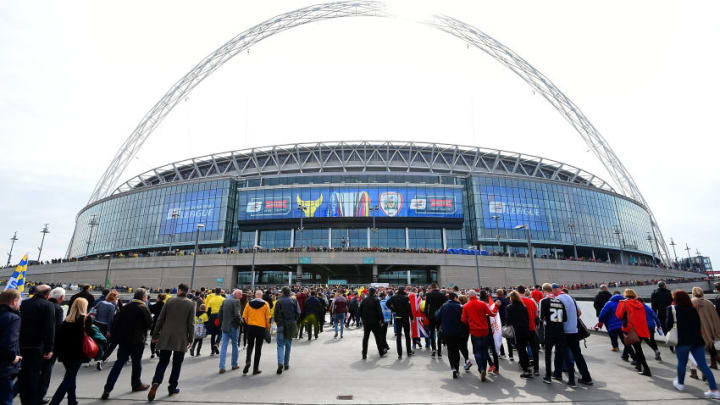Tottenham Hotspur are set to move into Wembley Stadium for their Champions League fixtures and it is looked at as a one year trial period before moving in full-time for the 2017-18 season.
Dan Kilpatrick’s article about the issues that Tottenham will face when they move out of White Hart Lane and begin playing at Wembley Stadium on ESPN FC is another fascinating read.
Related Story: Tottenham Set to Play Champions League Fixtures at Wembley
In it, Kilpatrick writes what Spurs can expect with a stadium that they will try to make fell like home while White Hart Lane is being demolished to make room for a brand new 61,000-seat stadium that will be built.
To begin with, Tottenham will be given “significant office space” at Wembley.
This is something that the Football Association has already started rearranging in preparation for Spurs to move in. The reason for this, that Dan Kilpatrick notes is because “UEFA requires some pre-match formalities to take place at the match venue.”
With regards to Tottenham’s 2017-18 season, Kilpatrick continues:
“The majority of matches in 2017-18 will have a maximum capacity of 50,800, owing to Brent Council stipulations that only 37 full-capacity events can be staged at Wembley per year, but Spurs will be allowed to fill the stadium for their biggest clashes.”

As for ticket pricing, that has yet to be finalized but according to Tottenham Hotspur Supporters’ Trust (THST), they called for “accessible pricing”. Which can only mean “fair value” but is more fancy to say.
Moving on, THST’s reason for choosing Wembley over stadium:mk, the home of MK Dons, was down to one reason. It was “the only pragmatic and realistic option” despite “valuing European nights at the Lane” which is a special kind of atmosphere due to the competition.
Dan Kilpatrick adds more thoughts on why White Hart Lane was unviable for next seasons’ Champions League group stage matches.
“Building work has already begun to remove 4,000 seats from White Hart Lane’s North East corner, leaving the stadium unable to meet some UEFA requirements to stage European football.”
“Additionally, further UEFA capacity restrictions, plus the loss of seats, would have made it difficult for Spurs to accommodate their 28,000 season-ticket holders and nearly impossible for some 70,000 club members to get tickets.”
More from Hotspur HQ
- Storybook ending after difficult period for Tottenahm’s Richarlison
- Tottenham comeback showcased invaluable intangible Ange has cultivated
- Tottenham player ratings in 2-1 comeback win over Sheffield United
- Tottenham projected starting 11 for Sheffield United
- Tottenham’s Richarlison says he’s going to seek psychological help
Despite some advantages of playing in stadium:mk, such as cheaper rent and modern facilities while earning more matchday revenue, there was no escaping the simple fact that Milton Keynes is 50 miles outside of London.
And keeping Tottenham in London means a lot to the club.
Finally, to wrap things up, according to the FA, their ideal situation for renting Wembley Stadium out is to have Tottenham and Chelsea as well use the England national team’s ground for five consecutive seasons.
Spurs will stay for two seasons, next year with just Champions League matches and then the entire 2017-18 campaign that includes the Premier League and European football too. Before letting Chelsea take over for the next three seasons.
Doing so will help bring in plenty of money for grassroots football that FA chairman, Greg Dyke, and chief executive, Martin Glenn, is making a strong push for.
Next: Toby Alderweireld: Euros Can Help Tottenham Players Mature
In the end, Tottenham have completed their first major hurdle which was getting the necessary approval to begin building their new stadium, which was eventually followed by construction work.
Now that Spurs have found a solution to a temporary home, it’s all about making Wembley a fortress like they did at White Hart Lane this past term.
